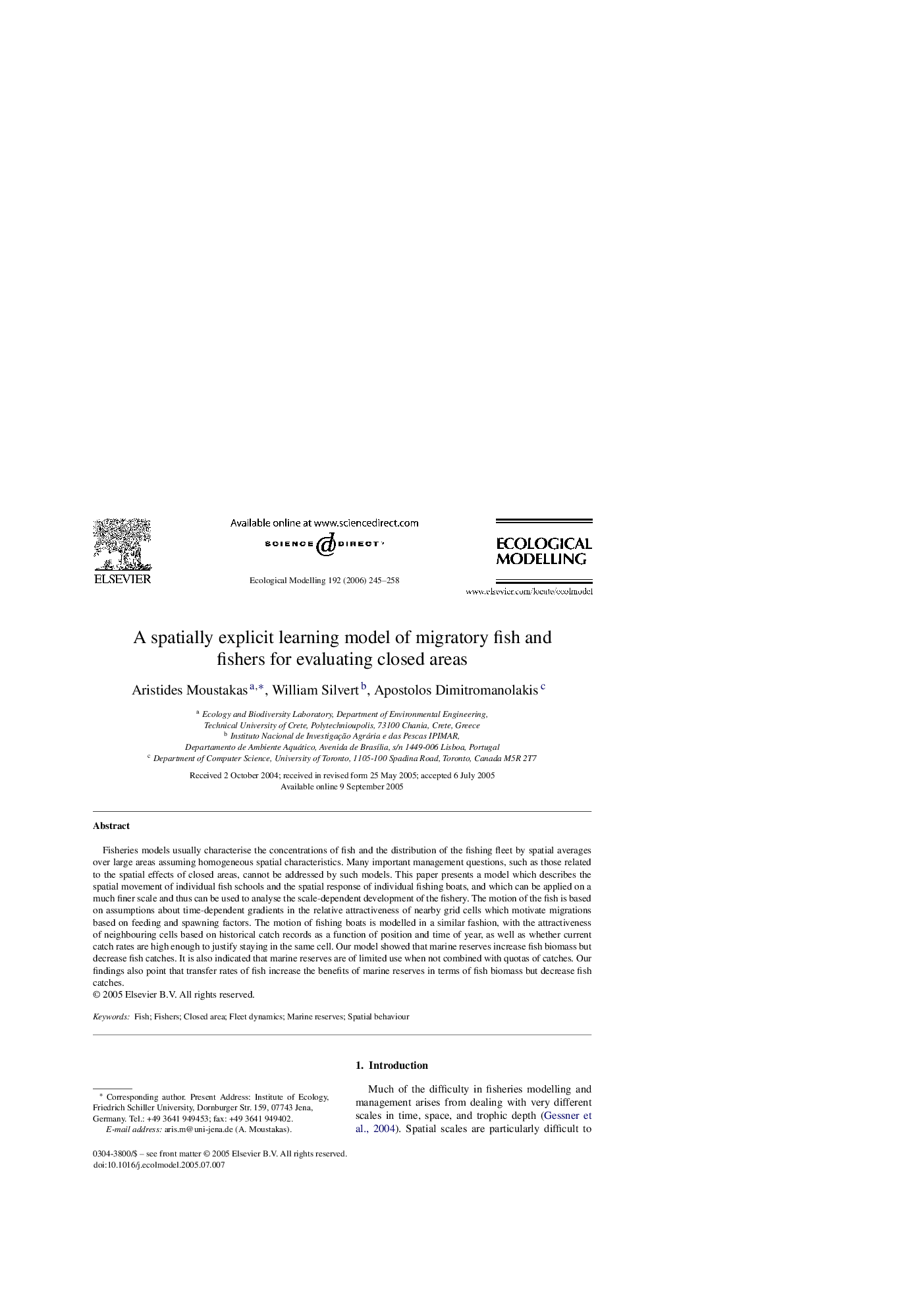| Article ID | Journal | Published Year | Pages | File Type |
|---|---|---|---|---|
| 4379136 | Ecological Modelling | 2006 | 14 Pages |
Abstract
Fisheries models usually characterise the concentrations of fish and the distribution of the fishing fleet by spatial averages over large areas assuming homogeneous spatial characteristics. Many important management questions, such as those related to the spatial effects of closed areas, cannot be addressed by such models. This paper presents a model which describes the spatial movement of individual fish schools and the spatial response of individual fishing boats, and which can be applied on a much finer scale and thus can be used to analyse the scale-dependent development of the fishery. The motion of the fish is based on assumptions about time-dependent gradients in the relative attractiveness of nearby grid cells which motivate migrations based on feeding and spawning factors. The motion of fishing boats is modelled in a similar fashion, with the attractiveness of neighbouring cells based on historical catch records as a function of position and time of year, as well as whether current catch rates are high enough to justify staying in the same cell. Our model showed that marine reserves increase fish biomass but decrease fish catches. It is also indicated that marine reserves are of limited use when not combined with quotas of catches. Our findings also point that transfer rates of fish increase the benefits of marine reserves in terms of fish biomass but decrease fish catches.
Related Topics
Life Sciences
Agricultural and Biological Sciences
Ecology, Evolution, Behavior and Systematics
Authors
Aristides Moustakas, William Silvert, Apostolos Dimitromanolakis,
